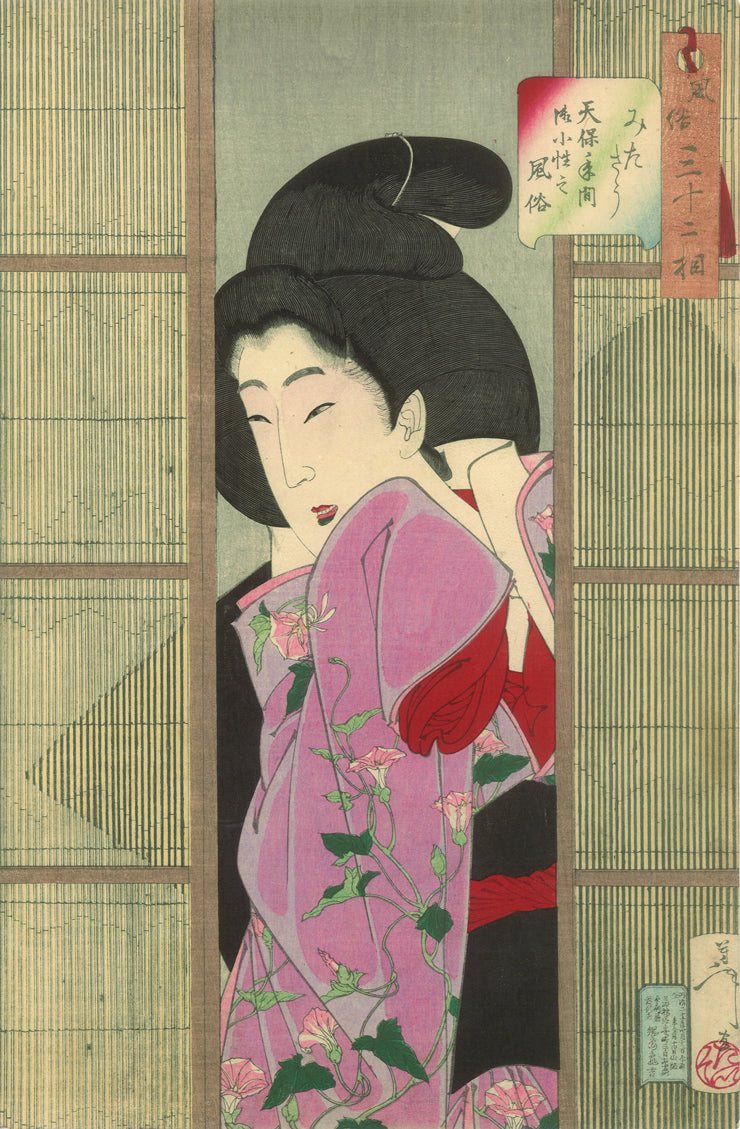
Ukiyo-e: Japanese Woodblock Prints
Ukiyo-e, a school of Japanese art, refers to a style of Japanese woodblock print and painting (a relief carving in wood that is imprinted within onto cloth or fabric) that flourished from the 17th through 19th centuries. Ukiyo-e (浮世絵) translates as "picture[s] of the floating world," which the pleasure districts of Edo (modern-day Tokyo) were once called. These prints depicted famous kabuki actors, city life, and eroticism, and romantic landscapes. Female beauty was a subject of abundance throughout ukiyo-e. As you browse, please note the exquisite patterns and elegant color exhibited in the kimonos of that era. Prominent artists in this style at the time were Ando Hiroshige, Katsushika Hokusai, Kitagawa Utamaro, Utagawa Toyokuni III, and Keisai Eisen, among others.

Inquisitive: the appearance of a maid of the Tempo era, No. 13 by Yoshitoshi
Color woodblock print, c. 1880
Color woodblock print, c. 1880

Flowers of Edo: Young Woman's Narrative Chanting to the Shamisen by Kitagawa Utamaro
Color woodblock print, c. 1800

Delighted: The Appearance of a Present-Day Geisha of the Meiji Era
by Tsukioka Yoshitoshi
Color woodblock print, 1888
Color woodblock print, 1888

Courtesan with a Shamisen by Eizan
Color woodblock print, (1787-1867)

Gravemarker Komachi: Iwai Kumesaburo III by Kuniyoshi
Color woodblock print, 1851

The twelfth month: Falling snow, Mukojima [Geisha and attendants
in snow] by Utagawa Toyokuni
Color woodblock print, c. 1810
Color woodblock print, c. 1810

Modern Specialties and Dyed Fabrics: Sound of Insects at the Bank on the Sumida by Keisai Eisen
Color woodblock print, c. 1830